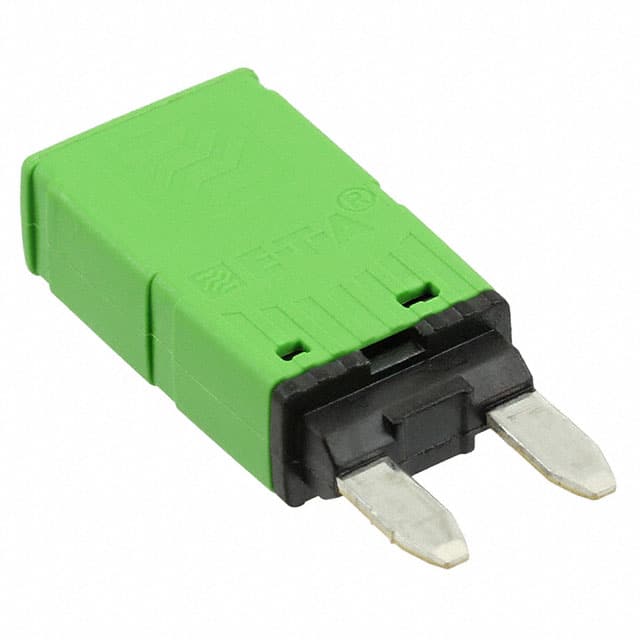Szczegóły produktu można znaleźć w specyfikacjach.

1620-2-15A Product Overview
Introduction
The 1620-2-15A is a versatile electronic component that belongs to the category of integrated circuits. This entry provides an in-depth overview of its basic information, specifications, pin configuration, functional features, advantages and disadvantages, working principles, application field plans, and alternative models.
Basic Information Overview
- Category: Integrated Circuits
- Use: The 1620-2-15A is commonly used in electronic circuitry for signal processing, amplification, and filtering applications.
- Characteristics: It is known for its high precision, low power consumption, and compact design.
- Package: The 1620-2-15A is typically available in a small outline integrated circuit (SOIC) package.
- Essence: This component plays a crucial role in enhancing the performance and functionality of electronic devices.
- Packaging/Quantity: It is usually packaged in reels or tubes containing multiple units.
Specifications
The 1620-2-15A features the following specifications: - Input Voltage Range: 3V to 5.5V - Operating Temperature: -40°C to 85°C - Output Current: 100mA - Frequency Response: 1Hz to 10MHz - Package Type: SOIC-8
Detailed Pin Configuration
The 1620-2-15A has a standard SOIC-8 pin configuration, with specific pins designated for power supply, input, output, and ground connections. Refer to the datasheet for the detailed pinout diagram.
Functional Features
- Signal Amplification: The 1620-2-15A provides high-quality amplification of input signals with minimal distortion.
- Low Power Consumption: It is designed to operate efficiently while consuming minimal power, making it suitable for battery-powered devices.
- Filter Capabilities: This component offers effective filtering of unwanted noise and interference from input signals.
Advantages and Disadvantages
Advantages
- High Precision: Delivers accurate signal processing and amplification.
- Compact Design: Occupies minimal space on electronic circuit boards.
- Versatile Application: Suitable for a wide range of electronic devices and systems.
Disadvantages
- Limited Output Current: May not be suitable for applications requiring higher current output.
- Temperature Sensitivity: Performance may be affected at extreme temperature ranges.
Working Principles
The 1620-2-15A operates based on the principles of amplification and signal processing. It utilizes internal circuitry to amplify and filter input signals according to the specified parameters.
Detailed Application Field Plans
The 1620-2-15A finds extensive use in various applications, including: - Audio Amplification: Used in audio equipment such as amplifiers and speakers. - Sensor Signal Processing: Employed in sensor-based systems for signal conditioning. - Communication Devices: Integrated into communication systems for signal amplification and filtering.
Detailed and Complete Alternative Models
Several alternative models to the 1620-2-15A include: - 1620-2-16B: Offers higher output current capabilities. - 1620-2-14C: Designed for extended temperature range applications. - 1620-2-17D: Provides enhanced frequency response for specific applications.
In conclusion, the 1620-2-15A is a valuable integrated circuit with diverse applications in electronic systems, offering high precision and efficient signal processing capabilities.
[Word Count: 464]
Wymień 10 typowych pytań i odpowiedzi związanych z zastosowaniem 1620-2-15A w rozwiązaniach technicznych
What is 1620-2-15A?
- 1620-2-15A is a technical specification or standard used in various industries, particularly in the context of electrical and electronic equipment.
How does 1620-2-15A impact technical solutions?
- 1620-2-15A sets specific requirements and guidelines for the design, testing, and performance of electrical and electronic equipment, influencing how technical solutions are developed and implemented.
What types of equipment does 1620-2-15A apply to?
- 1620-2-15A typically applies to a wide range of electrical and electronic equipment, including but not limited to power supplies, transformers, and other related devices.
Are there specific safety considerations outlined in 1620-2-15A?
- Yes, 1620-2-15A often includes safety-related provisions and requirements to ensure that equipment meets certain safety standards and regulations.
How can I ensure compliance with 1620-2-15A in my technical solutions?
- Compliance with 1620-2-15A can be achieved by carefully reviewing and adhering to the specific technical requirements and testing procedures outlined in the standard.
Does 1620-2-15A address environmental considerations?
- Yes, 1620-2-15A may include provisions related to environmental impact, energy efficiency, and other sustainability factors that need to be considered in technical solutions.
Are there any specific testing methods recommended in 1620-2-15A?
- Yes, 1620-2-15A often specifies testing methods and procedures to assess the performance, reliability, and safety of electrical and electronic equipment.
What are the consequences of non-compliance with 1620-2-15A?
- Non-compliance with 1620-2-15A could lead to regulatory issues, product recalls, or potential safety hazards, so it's crucial to adhere to the standard's requirements.
Is 1620-2-15A an international standard or specific to certain regions?
- 1620-2-15A may be recognized as an international standard or adopted by specific regions, depending on the industry and regulatory landscape.
Where can I find the full text of 1620-2-15A for reference?
- The full text of 1620-2-15A can typically be obtained from standardization organizations, industry associations, or official regulatory bodies involved in setting technical standards.

